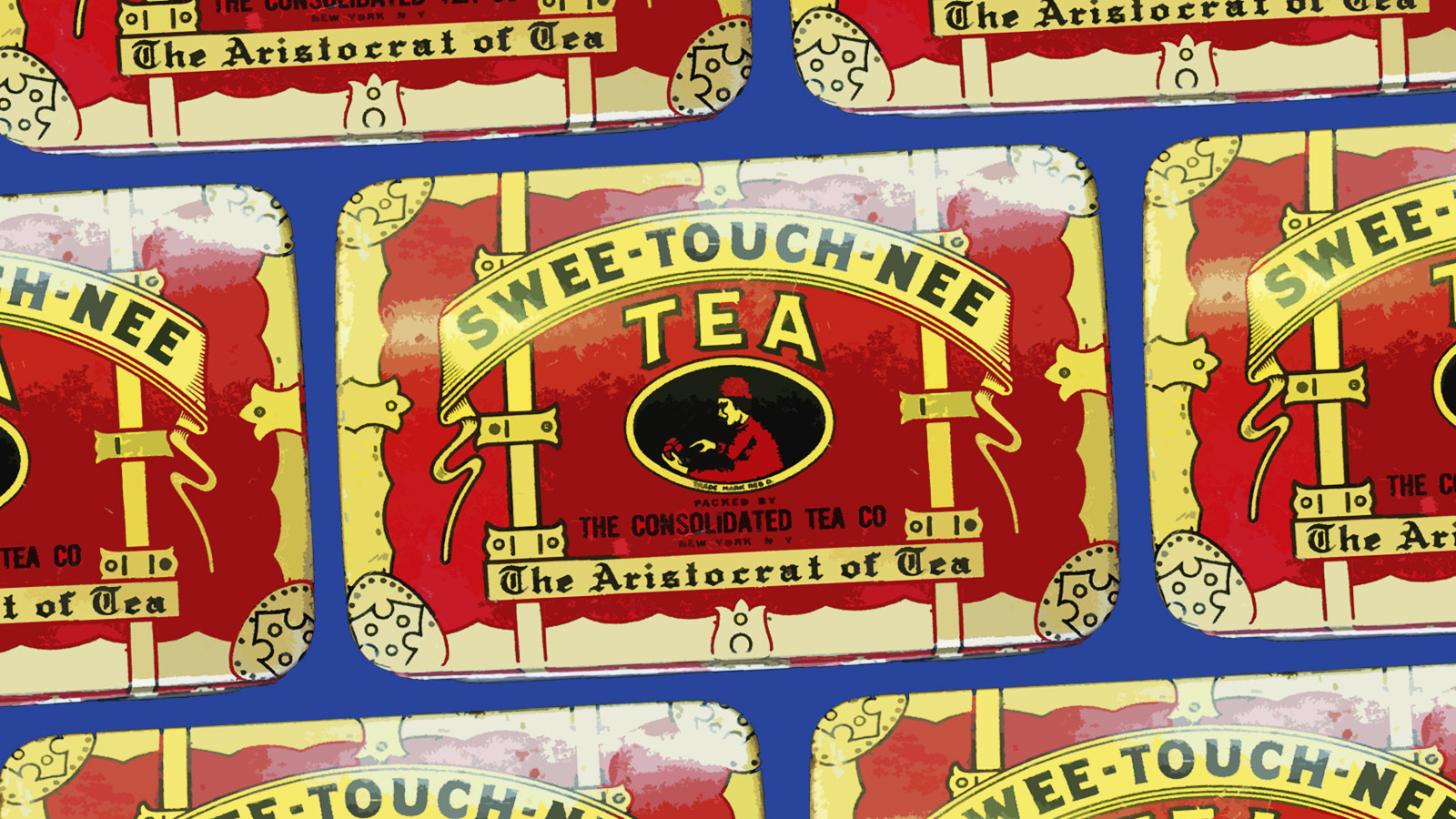Growing up, we drank a lot of tea. Not just any tea. The only brand my mother served was Swee-Touch-Nee.
Made from a blend of black tea leaves, Swee-Touch-Nee was, for Yiddish-speaking immigrants in the United States, reminiscent of the strong tea they enjoyed in the tea-drinking culture that they left behind. For their children and grandchildren, born, like my parents and me, in the U.S., it was a connection to the past. But nostalgia aside, Swee-Touch-Nee was simply delicious.
What we may not have realized when sipping cup after cup was how much of the Jewish immigrant’s story was buried in every tea bag.
Swee-Touch-Nee’s founder, Samuel Zechnowitz, arrived in New York in 1891 from Minsk, then part of the Tsar’s Russian Empire. The 26-year-old brought tea blends with him on the boat over. His great-grandniece Susan Watt believes there was a family tea business in Minsk.
The Nosher celebrates the traditions and recipes that have brought Jews together for centuries. Donate today to keep The Nosher's stories and recipes accessible to all.
“He set up shop in Lower Manhattan,” Watt told The Nosher. “By 1895, he founded the Consolidated Tea Company. Swee-Touch-Nee was one of his brands.”
Eventually, Zechonowitz closed his coffee and cocoa powder brands, and only Swee-Touch-Nee remained.
The tea’s name was clever: easy for an English speaker to pronounce, and easy for a Russian speaker to understand. Swee-Touch-Nee is the transliteration of the Russian word “tsvetochnyy,” which means “flowery.” For the first two decades of the brand’s life, its red-and-gold tin had the brand name in large Russian Cyrillic letters, with an English transliteration underneath in smaller typeface. Nestled under that was a drawing of a man holding a box of tea, who Susan Watt explained was Christopher Columbus.
Following the 1917 Russian Revolution, the names changed places, giving prominence to the English name. Eventually, the Cyrillic name was removed altogether. When Michelle Watt, a great-great-grandniece of the founder, interviewed her grandfather Elliot Labiner (the last president of the company), about these changes, he told her that the company decided to distance the brand from its Russian origins due to negative public sentiment in the U.S. surrounding the Russian Revolution and the Bolsheviks. A tag line, “The Aristocrat of Teas,” was added once the Russian lettering was removed from the tin.
Other changes followed. The image of the tea-holding man disappeared and Swee-Touch-Nee’s original tin container with a rounded top, shaped to look like a steamer trunk, a possession familiar to immigrants, was replaced with a cardboard one in the 1950s. Still, the image of the trunk remained.
So did the tea’s deep flavor. In Harold Robbins’ 1961 bestselling novel “The Carpetbaggers,” there’s a scene in which two characters share a cup of tea. One of them, an elderly Jewish woman, says to the other:
“Good isn’t it? That’s real tea. Swee-Touch-Nee. Like in the old country. Not like the chazerai [garbage] they try to sell you here.”
Thanks to its familiar flavor, iconography and the brand’s regular advertising in Yiddish-language media like the Jewish Daily Forward, Eastern European Jewish immigrants became devoted drinkers of the tea.
“Swee-Touch-Nee became the Jewish brand of tea,” said Menachem Lubinsky, the CEO of Lubicom, a marketing firm specializing in the Jewish and kosher market. “I think it was one of the few brands that advertised in Yiddish in those days. Whoever spoke to the Yiddish-speaking consumer found that they [the consumer] returned the favor by being loyal to the product.”
It was also, said Lubinsky, one of the first brands to get kosher certification for Passover, a practice which continues today. By the middle of the 20th century, wrote Jenna Weissman Joselit, a scholar specializing in the history and culture of American Jewry, Swee-Touch-Nee had become an American Jewish staple. As the Jewish community spread outward from Manhattan’s Lower East Side, so did the reach and the advertising of the product. Ads appeared in Jewish newspapers in Boston, Chicago, Miami and Philadelphia.
Over the years, the brand branched out — to decaffeinated, green and flavored teas, and powdered iced tea. The latter two were short-lived experiments. While the tin boxes have been relegated to online sales on Etsy, the cardboard box that replaced it still has its signature red-and-gold color and stylized reference to a steamer trunk.
In 2015, Elliot Labiner, the fourth and last president of the Zechnowitz family-owned business, sold the company to Eastern Tea, a tea business owned by another family, ending the 120-year trajectory.
“Starting in 1993, we did the packaging for Swee-Touch-Nee,” Ira Barbakoff, the president of Eastern Tea, told The Nosher. “So buying the brand was a natural transition.”
But sales of the product have declined. “The Eastern European immigrants are no longer with us,” Barbakoff said. “The dynamics of the business have changed. When you look at the shelves, there are lots of other products out there. The immigrants’ kids are getting on in age as well. The grandkids don’t have the same relation to the brand. Now, it’s a holiday kind of thing.”
I remember the first time I went looking for Swee-Touch-Nee in my neighborhood store and couldn’t find it. I bought a box of Lipton tea instead, but I felt guilty, as if I were turning my back on my past. Now I know that Swee-Touch-Nee can be purchased online from Bromley Tea, a label owned by Eastern Tea, or Amazon.
A few months before her grandfather, Elliot Labiner, died, Michelle Watt asked if she could interview him.
“What for?” he answered. “Who would be interested in what I have to say?”
“Oh, more people than you know,” she said.



